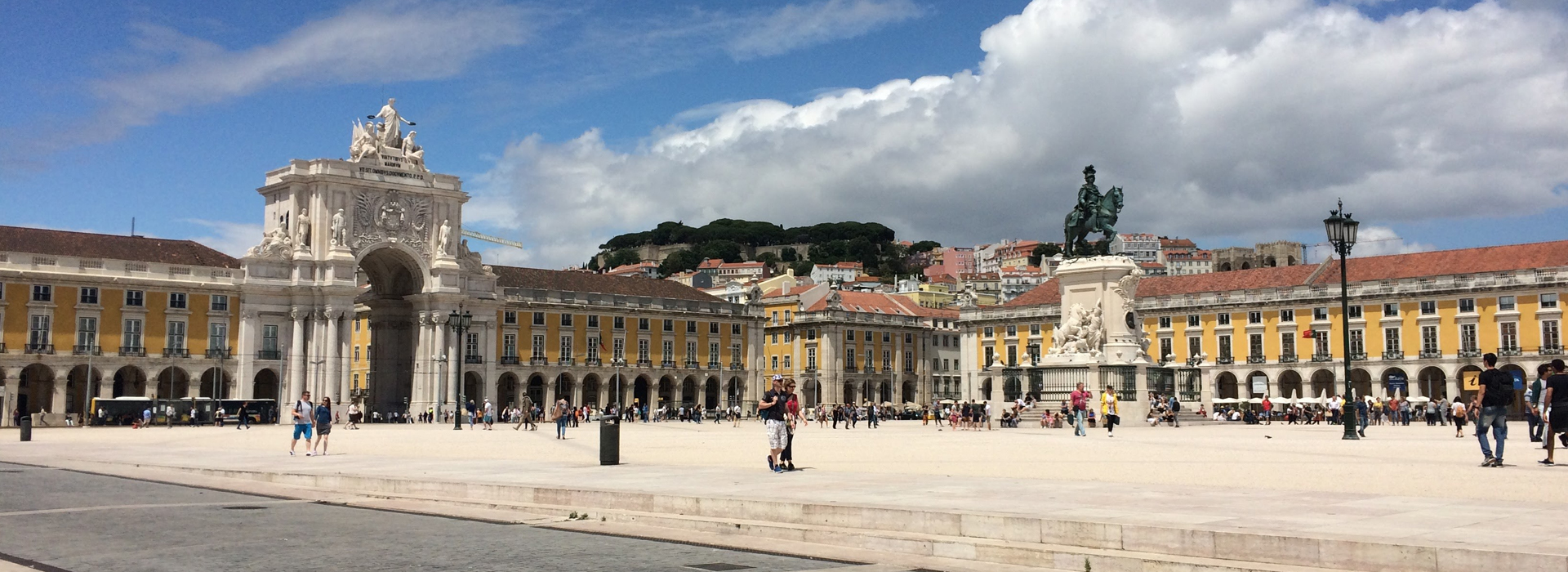
Rua Augusta Arch (Arco da Rua Augusta)

With this entrance ticket you can gain entry to the Rua Augusta Arch viewing platform at your leisure. Book with confidence with FREE CANCELLATION Buy online before you arrive to avoid queues and have the convenience of the e-ticket on your phone…
Daily: 09h00 - 19h00

Dominating the north side of the square is the mighty Rua Augusta Arch, supported by six columns support a broad cornice emblazoned with the Portuguese coat of arms. Atop the structure is not the bell tower as originally planned but a group of statues representing Glory rewarding Valour and Genius designed by the French sculptor Célestin Anatole Calmels (1822- 1906). These triumphant sculptures do not celebrate a famous battle but the victory over tragedy. Below Calmels's statues are the figures of Viriatus, Nuno Álvares Pereira, Vasco da Gama and Marquis of Pombal designed by Vítor Bastos.
Opened to the public in August 2013 after being totally renovated, visitors are able to enjoy the fabulous viewpoint at the top via an elevator where you're able to enjoy 360º views. Inside, in the Clock Room (Sala do Relógio), visitors can also discover the history of the Rua Augusta Arch, from the moment construction began after the earthquake until its completion in 1875. Its clock face is on the northern side of the arch overlooking the Rua Augusta.
78 - 81 Terreiro do Paço, 1100-148, Lisboa, Portugal
38º 42' 28.7" N | 09º 08' 8.6" W
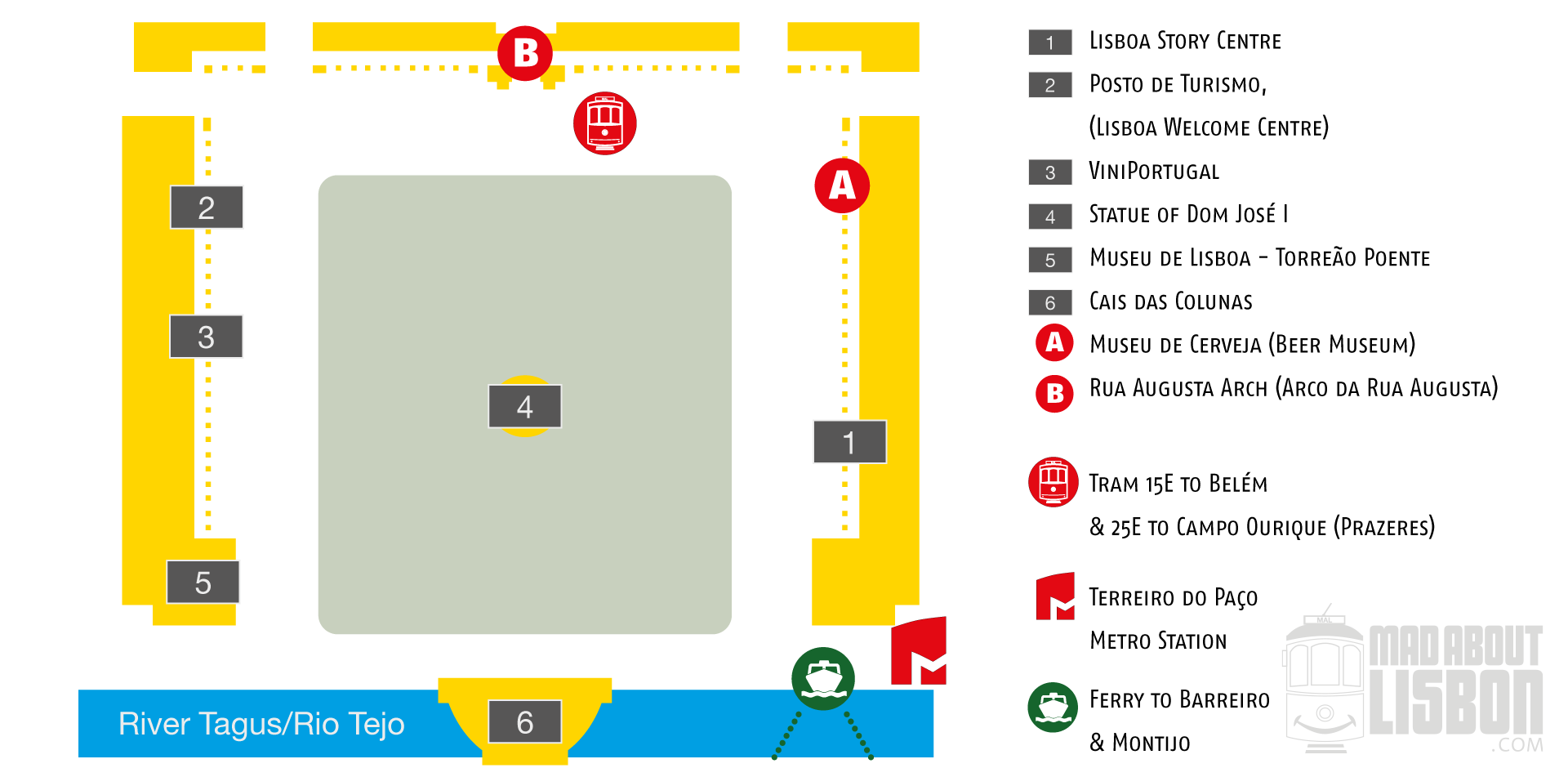
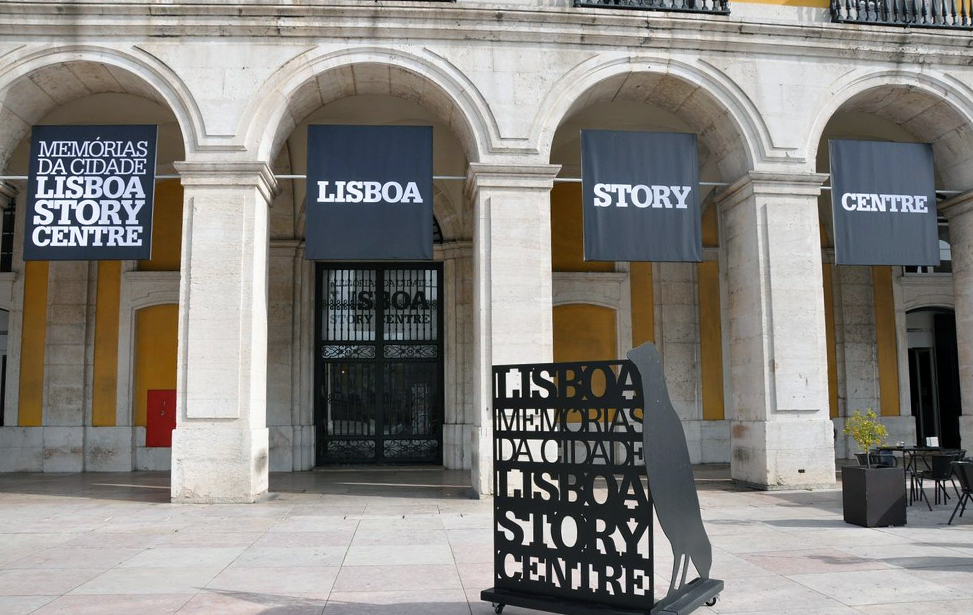
1
Lisboa Story Centre
Lisboa Story Centre is an innovative exhibition space dedicated to the history of Lisbon, inspired by the array of facts and events that have shaped the city. Located in the east wing of the newly renovated Praça do Comércio, this interactive visitor attraction comprises six public areas, featuring state-of-the-art technology. [ More About ► ]
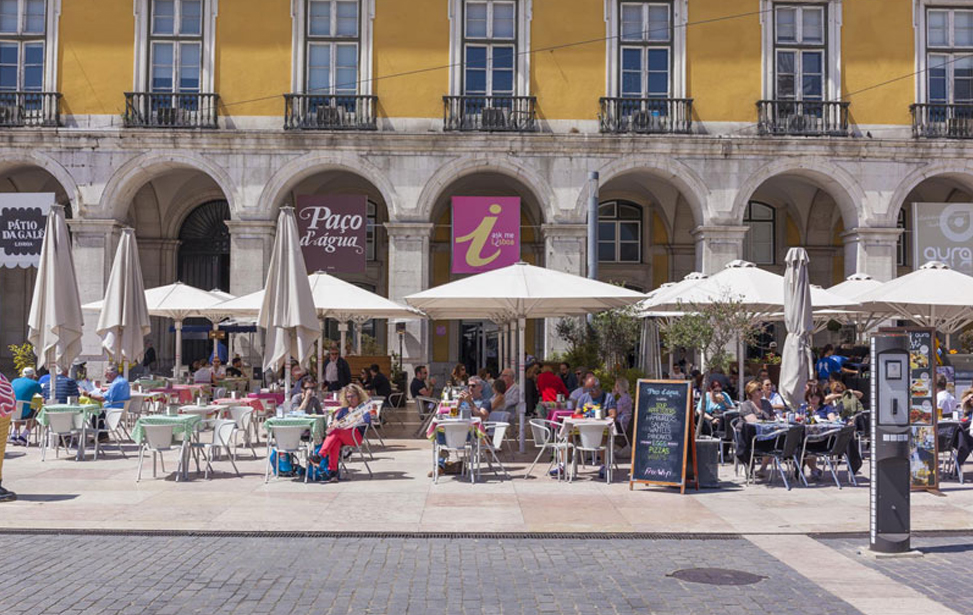
2
Posto de Turismo Lisboa Welcome Centre
The Posto de Turismo Lisboa Welcome Centre is a great place to pick up leaflets and a range of tourism advice. Here you can purchase a money-saving 'Lisboa Card' if you plan to make the most of your visit. The Welcome Centre also offers advice about available accommodation within the city and surrounding area. There's also a café on-site for perusing tourist brochures at your leisure, an exhibition hall and a souvenir shop.
Daily: 09h00 - 20h00 (last entry 19h00)
Terreiro do Paço, 1100-148 Lisboa, Portugal
38º 42' 26.8" N | 09º 08' 15.9" W
+351 210 312 810
atl@visitlisboa.com | Website
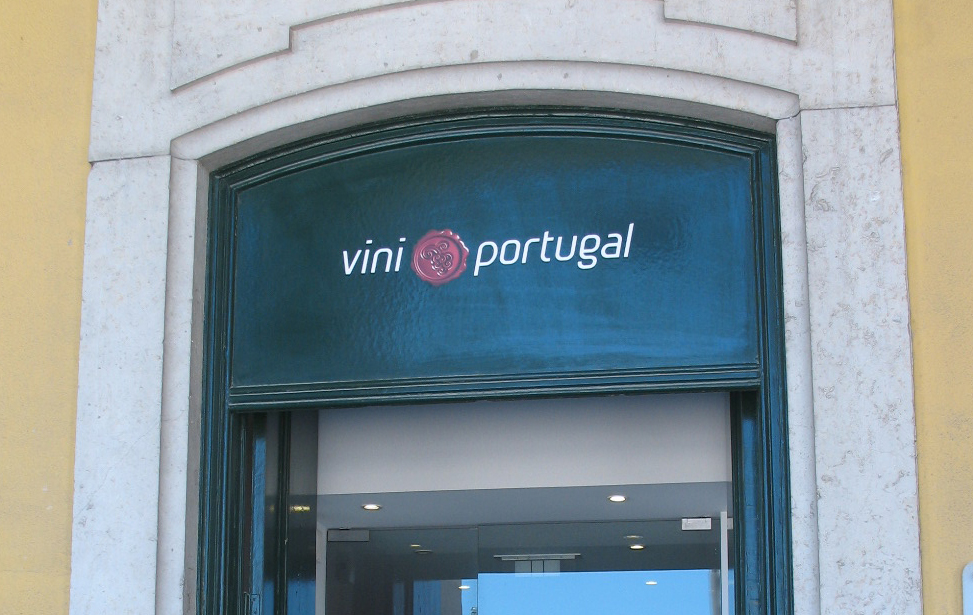
3
Wine Tasting at ViniPortugal
More commonly known as Sala Ogival, the ViniPortugal tasting rooms, offer wine tasting from different Portuguese wine regions. In addition to the regular daily wine tasting, Wines of Portugal Tasting Rooms also offer a programme of wine-related events, such as the launch of new wines and producers, demonstrations, workshops, themed events, amongst others. Admission is free, but for tastings you need to purchase an Enocard for the price of €2.00, which will give access to tasting two to four wines from a selection of 12 wines from different regions of the country.
Tuesday - Saturday: 11h00 - 19h00, Sunday - Monday: CLOSED
€2.00
Terreiro do Paço, 1100-148 Lisboa, Portugal.
38º 42' 28.7" N | 09º 08' 08.3" W
+351 213 420 690
sala.ogival@viniportugal.pt | Website
.
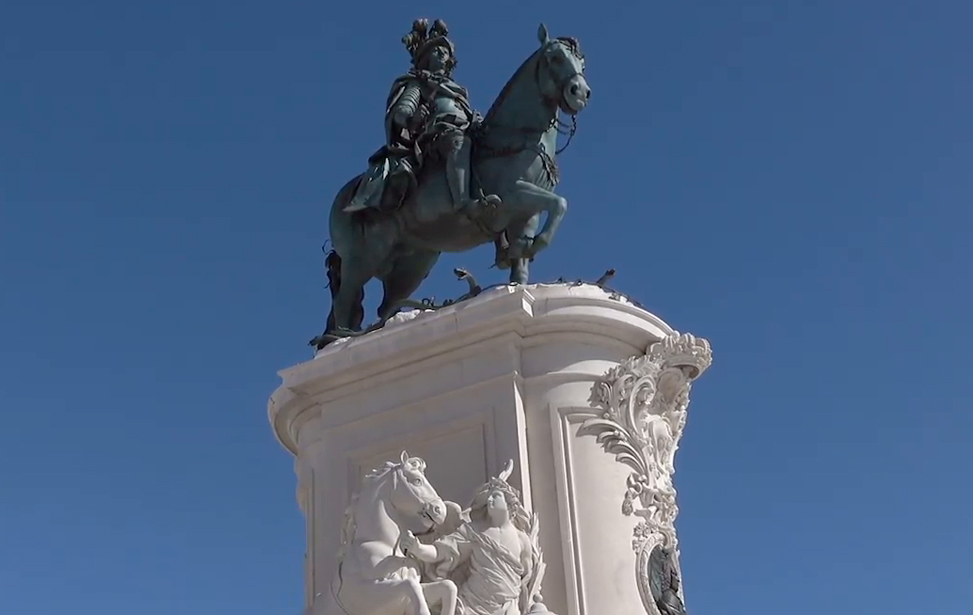
4
Statue of Dom José I
Following the devastating earthquake of 1755, an international competition was held to create a statue of Dom José I based on drawings prepared by Eugenio dos Santos. The winner of the competition was Joaquim Machado de Castro. He cast the equestrian statue in a zinc, copper, and tin alloy. It resists salt air corrosion. The statue was unveiled on the king's birthday in 1775. It portrays the mounted monarch trampling snakes under the hooves of his horse. It was the first such statue to be cast in Portugal and remains a focal point in the Praça do Comércio. The statue is considered the first work of public art in Portugal. Its completion marked a pivotal moment in the career of Joaquim Machado de Castro, who became the official royal sculptor. In 2013 a conservation project was carried out to restore the cast figure and the plinth it's mounted on.
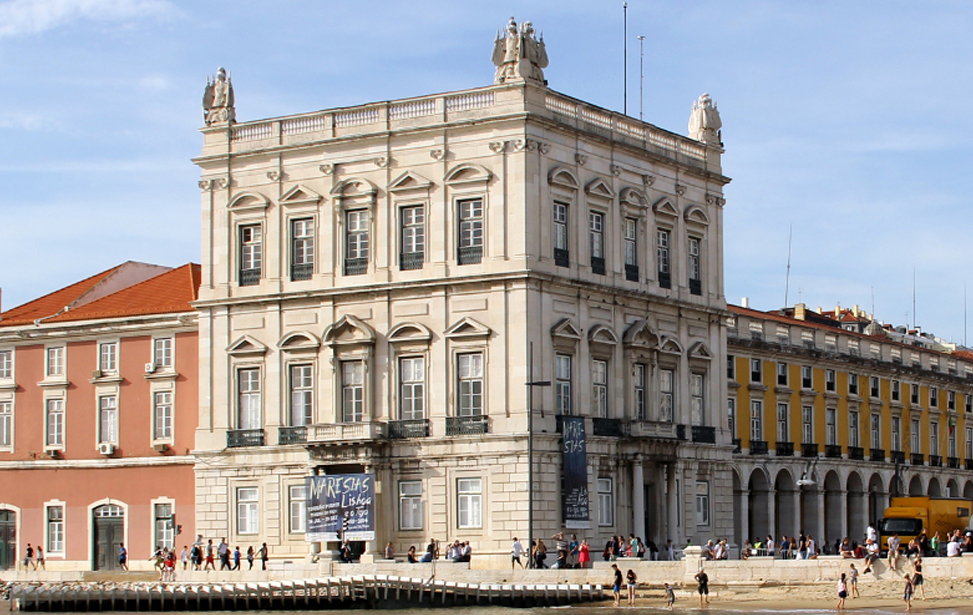
5
Museu de Lisboa - Torreão Poente
The Torreão Poente is located in the west tower in the square, roughly where a tower of the Paço da Ribeira once stood. It is a space dedicated to temporary exhibitions of medium duration, diverse themes related to the history and the present of Lisbon. Part of the Lisbon Museum who have other venires around Lisbon such as the Pimenta Palace, Roman Theatre, Santo António and Casa dos Bicos.
Tuesday to Sunday: 10h00 - 18h00 (last entry at 17h30). Monday: CLOSED
1 Terreiro do Paço, 1100-148 Lisboa, Portugal
38º 42' 24.5" N | 09º 08' 16.2" W
info@museudelisboa.pt | Website
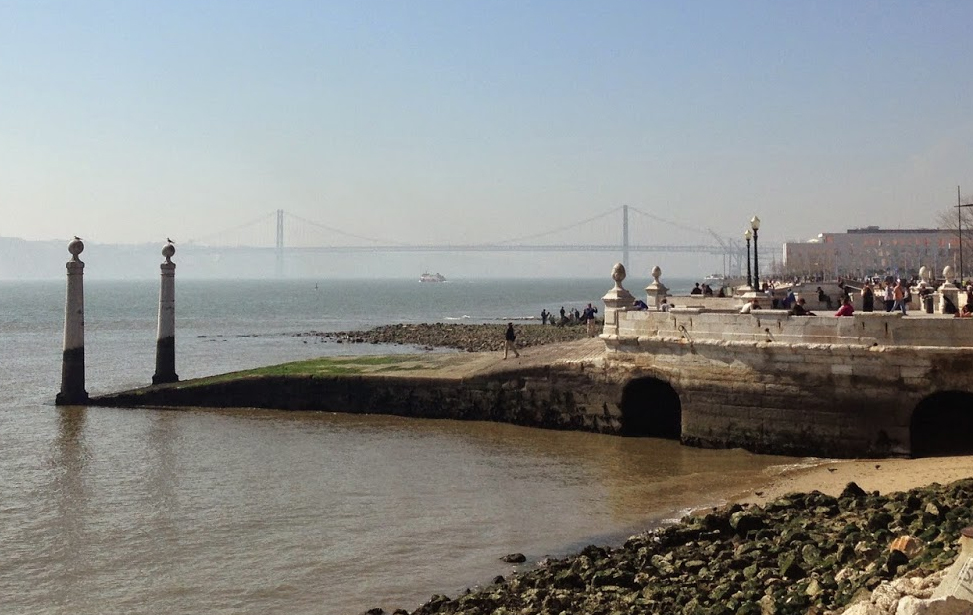
6
Cais das Colunas
A flight of marble steps lead down from the Praça do Comércio into the water's edge. They predate the 1755 earthquake and was once used to give a grand entrance to royal dignitaries visiting the old royal palace. Queen Elizabeth II disembarked from the Queen Mary yacht here in 1957. More recently, the steps were removed during the construction of the Metro station close by, but now they're back. They are frequented by those who wish to marvel at the views downstream to the bridge, especially at sunset.
The steps get their name from the two tide stained columns on either side of the steps. They're reputed to be the work of Eugenio dos Santos who was involved in the reconstruction of the square. They've aligned with the Statue of Dom José I and the arch of Rua Augusta. It's rumoured they represent the two pillars of the temple of Solomon (wisdom and devotion)
History of the Praça do Comércio

The earthquake of 1755, known as the Great Lisbon earthquake, even though the epicentre accord in the Atlantic Ocean about 120 miles (200 km) Southwest of Portugal, was devastating for Lisbon and Southern Portugal. The quake had an estimated magnitude of between 8.5 and 9. The aftershocks, fires and the enormous tsunami that followed collectively killed between 30 – 40,000 people in Lisbon alone. The disaster occurred on the morning of All Saints' Day, the 1st of November. Most of the population were attending church. The lit candles inside the religious buildings contributed to the fires that followed the quake.
The royals moved out from the centre of Lisbon to higher ground. The area where the royal dwelling had once stood was rededicated to commerce. This huge new square was open on the side of the river allowing for ships to moor alongside. The perimeter of the square is formed by large canary-yellow coloured buildings dedicated to administrating Portugal's trade and customs. On the ground level, long colonnades allowed shade from the midday sun. The two ends of the open "U" shape adorn two large towers reminiscent of the tower which once belonged to the Ribeira Palace.
Neither the King nor the Marquis saw the completion of the great triumphal arch located at the northern side of the square. It was completed in 1873. The centrepiece of the square is the equestrian statue of King José I. It is the first monumental statue dedicated to a monarch in Lisbon. It was designed by Joaquim Machado de Castro, Portugal's foremost sculptor of the time.
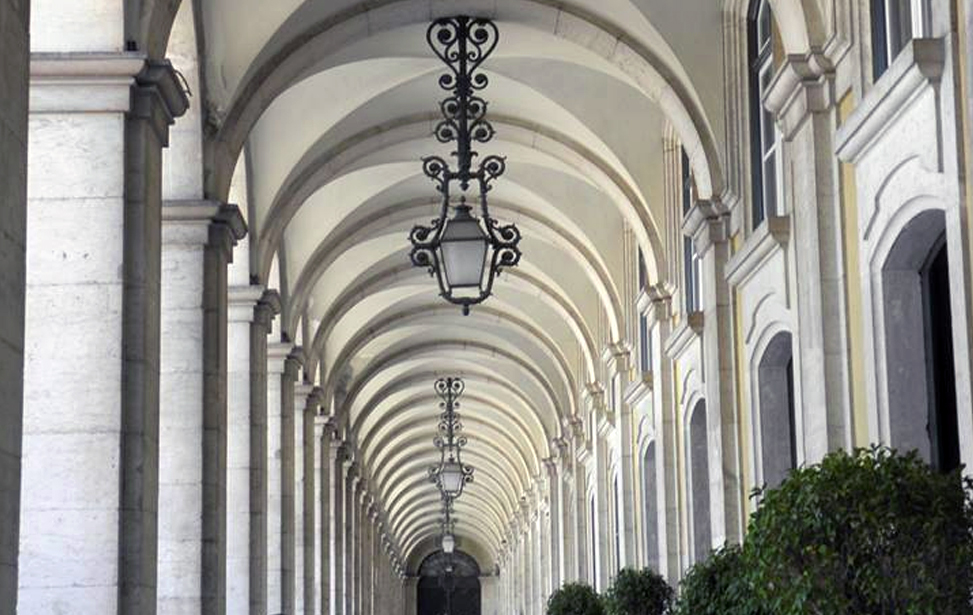
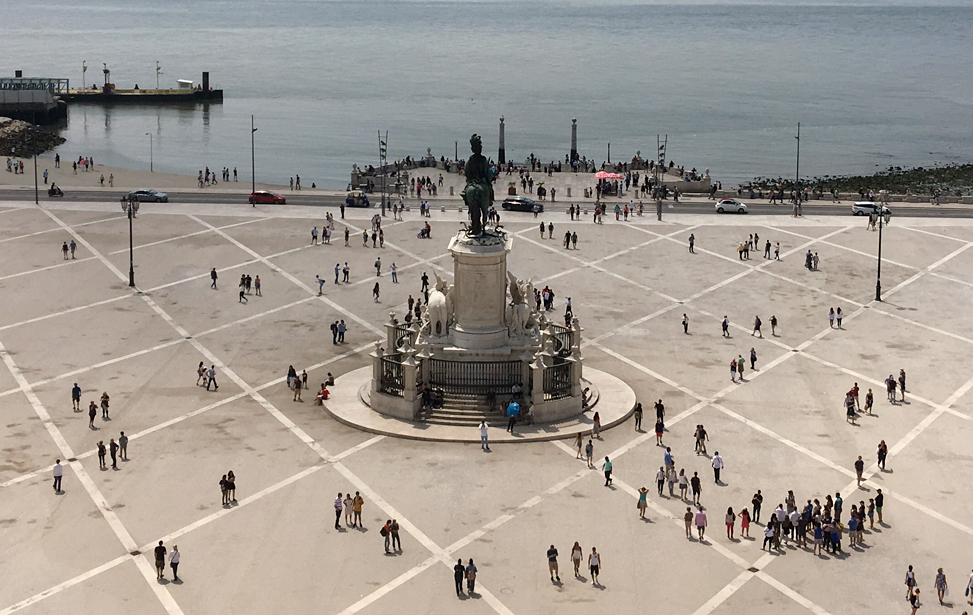
Many of the government offices that once dominated the square are now restaurants, cafés and museums. Lisbon's main tourist office is located in the square and the outside café seating makes an ideal place to browse through tourist brochures and plan your stay. The most famous of these cafés is the Café Martinho da Arcada which dates back to 1782 and has been a favourite haunt of poets and artists down the ages. The metro station for Praça do Comércio takes the old name for the square, Terreiro do Paço, and runs on the Linha Azul (Blue line). Opposite the Metro station is the ferry port that carries passengers the transport links at Barreiro on the southern bank.
Museu da Cerveja (Beer Museum)
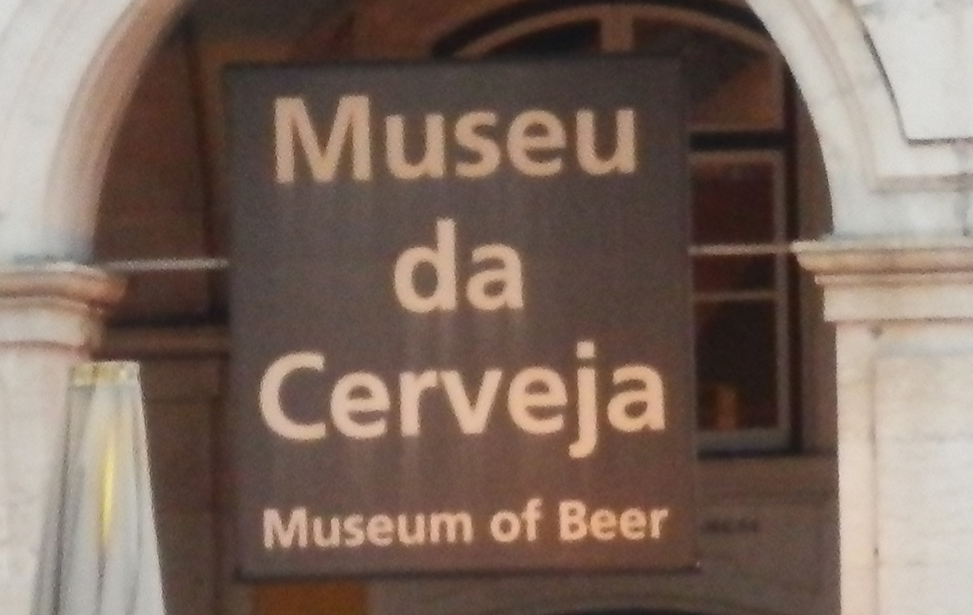
The first floor celebrates snacks, tapas and other delicious munchies that accompany a beer. Here is the beerhouse and restaurant. There is even a fishcake making machine. The Museum of Beer has a full interior capacity of 240 seats and has a large terrace with 380 seats with a wonderful sight to the river. A great place to enjoy a beer and a snack, however, I would suggest going to a dedicated restaurant for a good meal.
Beer house: 12h00 - 00h00, Museum: 12h00 - 22h00 | €5.00 (inc. tasting)
62 - 65 Terreiro do Paço, 1100-148, Lisboa, Portugal | 38º 42' 29.9" N | 09º 08' 8.8" W
+351 210 987 656 | reservas@museudacerveja.pt | Website


 Lisbon Card Discounts
Lisbon Card Discounts










